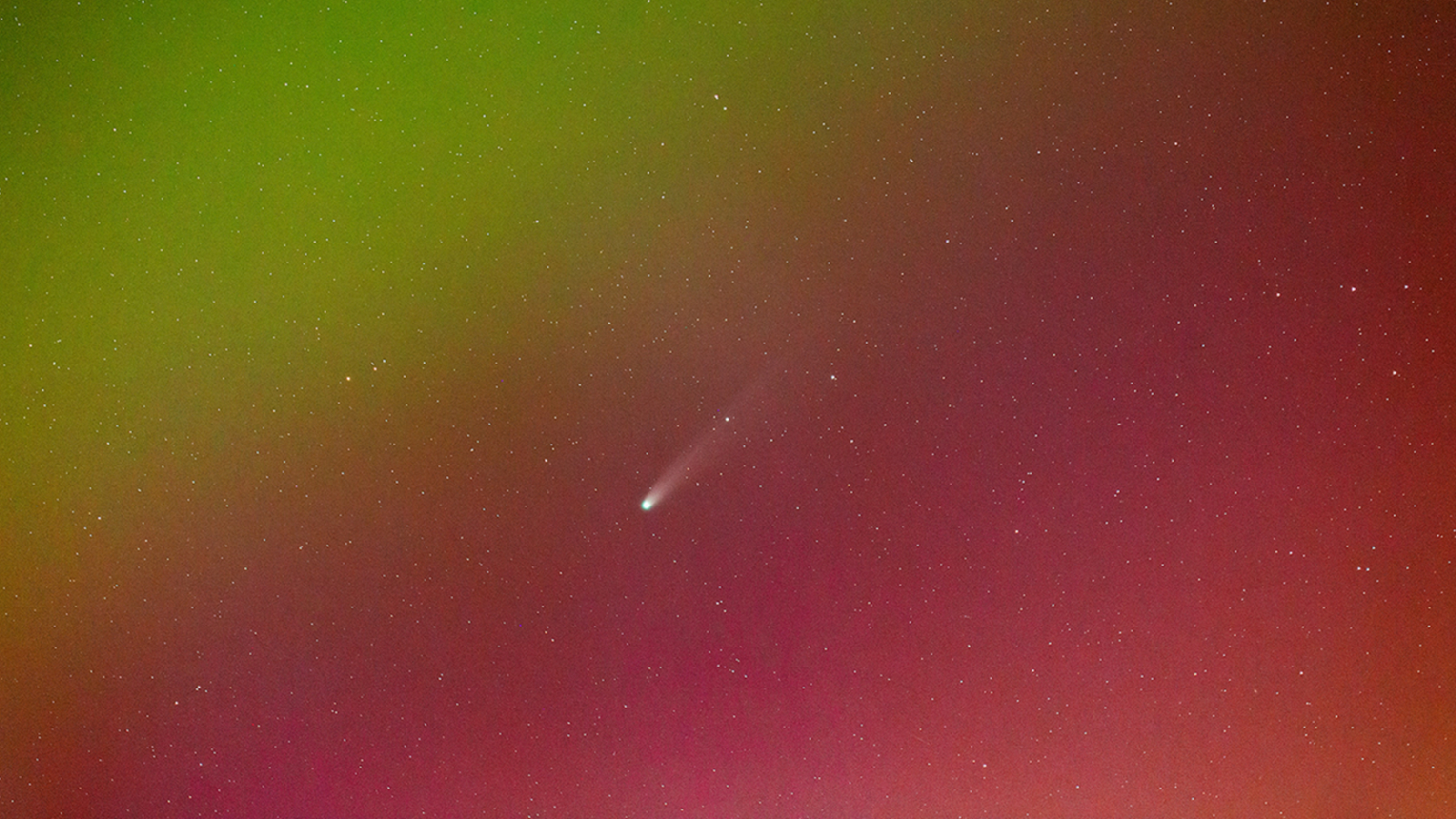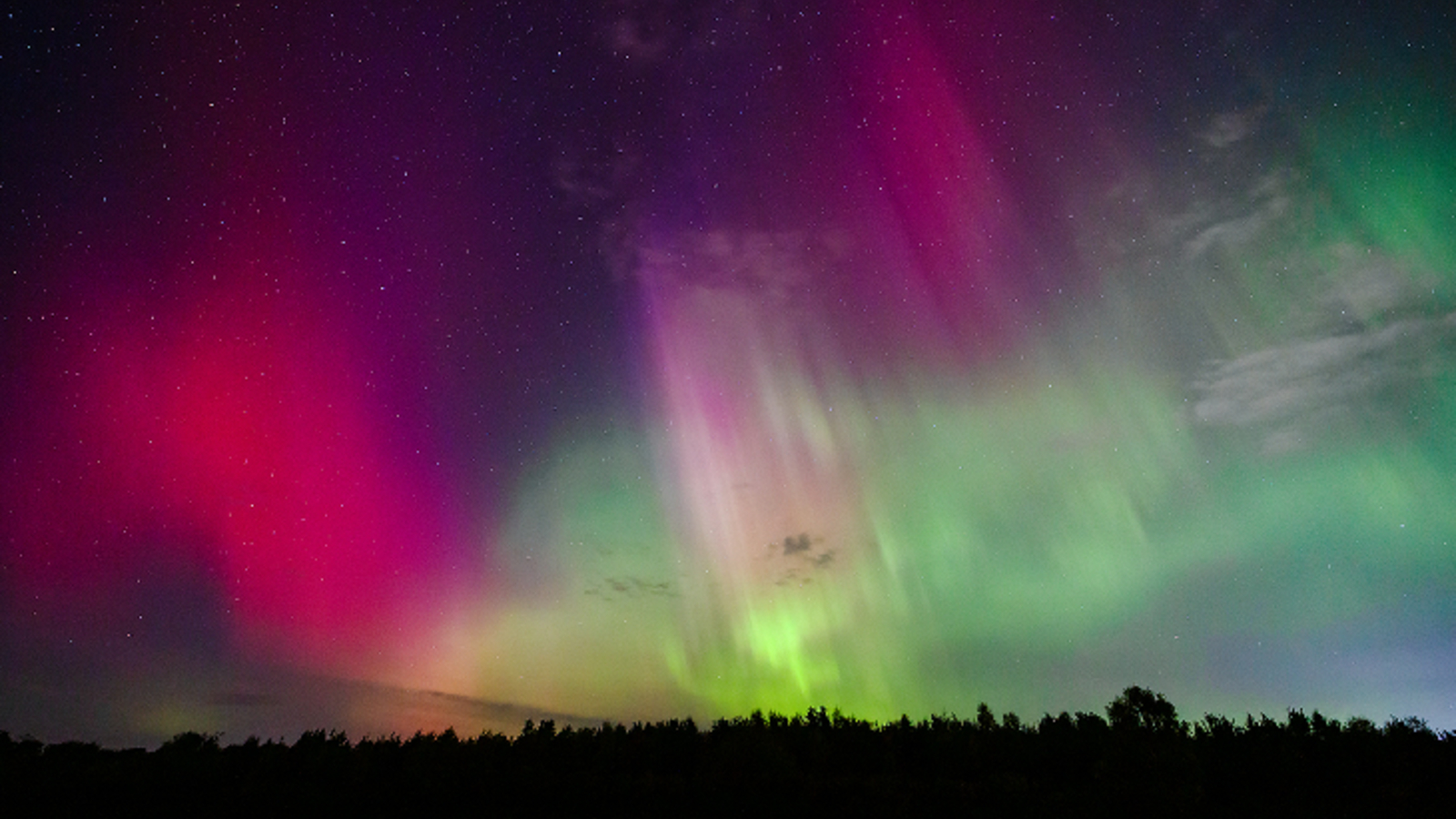Superbright 'Comet Lemmon' flies through auroras over Scotland during surprise solar storm
A photographer snapped a striking shot of Comet Lemmon streaking over Scotland as the night sky unexpectedly filled up with a technicolor mix of vibrant auroras.

Days before making its closest approach to Earth for more than 1,000 years, the superbright comet C/2025 A6 (Lemmon) has been snapped over the Scottish Highlands, appearing to fly through a technicolor swirl of auroras that suddenly exploded into the night sky.
Photographer Alan Tough took the spectacular shot in the early hours of Saturday (Oct. 18) from his backyard near the town of Elgin in northeast Scotland. He was originally planning to photograph the comet on its own when the auroras suddenly erupted, according to Spaceweather.com, which first shared the photos.
The auroras were the result of a surprise geomagnetic storm, or disturbance to Earth's magnetic field, triggered by a coronal mass ejection (CME) from the sun. This solar storm was originally predicted to hit our planet two days earlier but was delayed, reducing hopes of any resulting auroral displays. The disturbance eventually reached G2 (moderate) status, meaning auroras were potentially visible in up to 15 U.S. states, Live Science's sister site Space.com reported.
A wide range of aurora colors were visible within the auroral arc, including more typical colors, such as greens and reds, as well as rarer hues, like oranges and pinks, which only appear under specific conditions.
The bright comet was more than 230 times farther away from Earth than the moon when the image was taken.

Comet Lemmon was discovered on Jan. 3, by researchers at the Mt. Lemmon SkyCenter observatory in Arizona's Santa Catalina Mountains. It is a nonperiodic comet that likely orbits the sun every 1,350 years.
Comet Lemmon will make its closest approach to Earth today (Oct. 21), when it will come within 56 million miles (90 million kilometers) of our planet, before reaching its closest point to the sun, or perihelion, on Nov. 8.
Get the world’s most fascinating discoveries delivered straight to your inbox.
Lemmon has become much brighter in recent weeks as its increased proximity to the sun has caused the cloud of gas, ice and dust surrounding it — known as its coma — to expand. It currently has an apparent magnitude of 4, meaning it is clearly visible to the naked eye.
The comet has also grown a sizable tail, which has been frequently battered by solar wind as Lemmon swerves through the inner solar system.
People in the Northern Hemisphere can see the comet in the northwestern sky, located just below the Big Dipper, shortly after sunset. While visible to the naked eye, the best views will be achieved with a decent backyard telescope or a pair of stargazing binoculars. To capture the best possible photos of Lemmon, you can check out our comet photography guide.
Another bright comet, named SWAN, also reached its closest point to Earth on Monday (Oct. 20) and is currently observable in the night sky not far from Lemmon. However, SWAN is not visible to the naked eye and can only be seen using stargazing equipment.

Harry is a U.K.-based senior staff writer at Live Science. He studied marine biology at the University of Exeter before training to become a journalist. He covers a wide range of topics including space exploration, planetary science, space weather, climate change, animal behavior and paleontology. His recent work on the solar maximum won "best space submission" at the 2024 Aerospace Media Awards and was shortlisted in the "top scoop" category at the NCTJ Awards for Excellence in 2023. He also writes Live Science's weekly Earth from space series.
You must confirm your public display name before commenting
Please logout and then login again, you will then be prompted to enter your display name.


